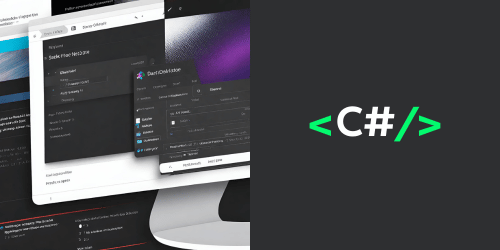In the realm of programming, decision-making is a fundamental concept that allows the flow of execution to change based on conditions. At the heart of this concept lies the if statement, one of the most basic and essential tools in a programmer's arsenal. This blog post will delve into the if statement, explaining its purpose, syntax, and how it enables developers to write dynamic and responsive code.
What is an If Statement?
An if statement is a control flow statement that evaluates a condition and executes a block of code if the condition is true. It's the simplest form of decision-making in programming, enabling programs to react differently to various inputs or states.
The Anatomy of an If Statement
The basic syntax of an if statement in most programming languages is straightforward:
if (condition) {
// Block of code to execute if the condition is true
}
- Condition: A boolean expression that evaluates to either true or false.
- Block of code: The instructions that will be executed if the condition is true.
Expanding the If Statement
To handle multiple conditions or scenarios, if statements can be expanded using else if and else clauses:
- else if: Specifies a new condition to test if the previous
if condition is false. - else: Executes a block of code if none of the preceding conditions are true.
Syntax Example
if (condition1) {
// Executes when condition1 is true
} else if (condition2) {
// Executes when condition2 is true
} else {
// Executes if none of the above conditions are true
}
Using If Statements: A Practical Example
Consider a simple example where we need to categorize the age of a person:
int age = 25;
if (age < 18) {
Console.WriteLine("You are a minor.");
} else if (age >= 18 && age <= 65) {
Console.WriteLine("You are an adult.");
} else {
Console.WriteLine("You are a senior.");
}
In this C# example, the program checks the person's age and prints out whether they are a minor, an adult, or a senior. This illustrates how if statements can direct the flow of execution based on varying conditions.
Best Practices for Using If Statements
- Keep Conditions Simple: Complex conditions can make your code hard to read and maintain. Consider breaking complicated conditions into multiple
if statements or using boolean variables to store condition results. - Avoid Deep Nesting: Deeply nested
if statements can make code difficult to follow. Try to refactor deeply nested conditions into separate functions or use switch statements if appropriate. - Use Braces for Clarity: Even if your programming language allows you to omit braces for single-statement blocks within
if conditions, using them can improve readability and prevent errors during maintenance.
The Power of Decision-Making in Programming
If statements are a critical part of programming, enabling scripts and applications to make decisions and behave differently under varying conditions. Whether it's validating user input, determining the outcome of operations, or implementing game logic, if statements provide the necessary control to make software interactive and adaptable.
Conclusion
Mastering the if statement is a crucial step for any programmer, laying the foundation for more complex decision-making and control flow in software development. By understanding and effectively using if statements, developers can create programs that intelligently respond to a wide array of conditions, making software more dynamic and user-friendly.

